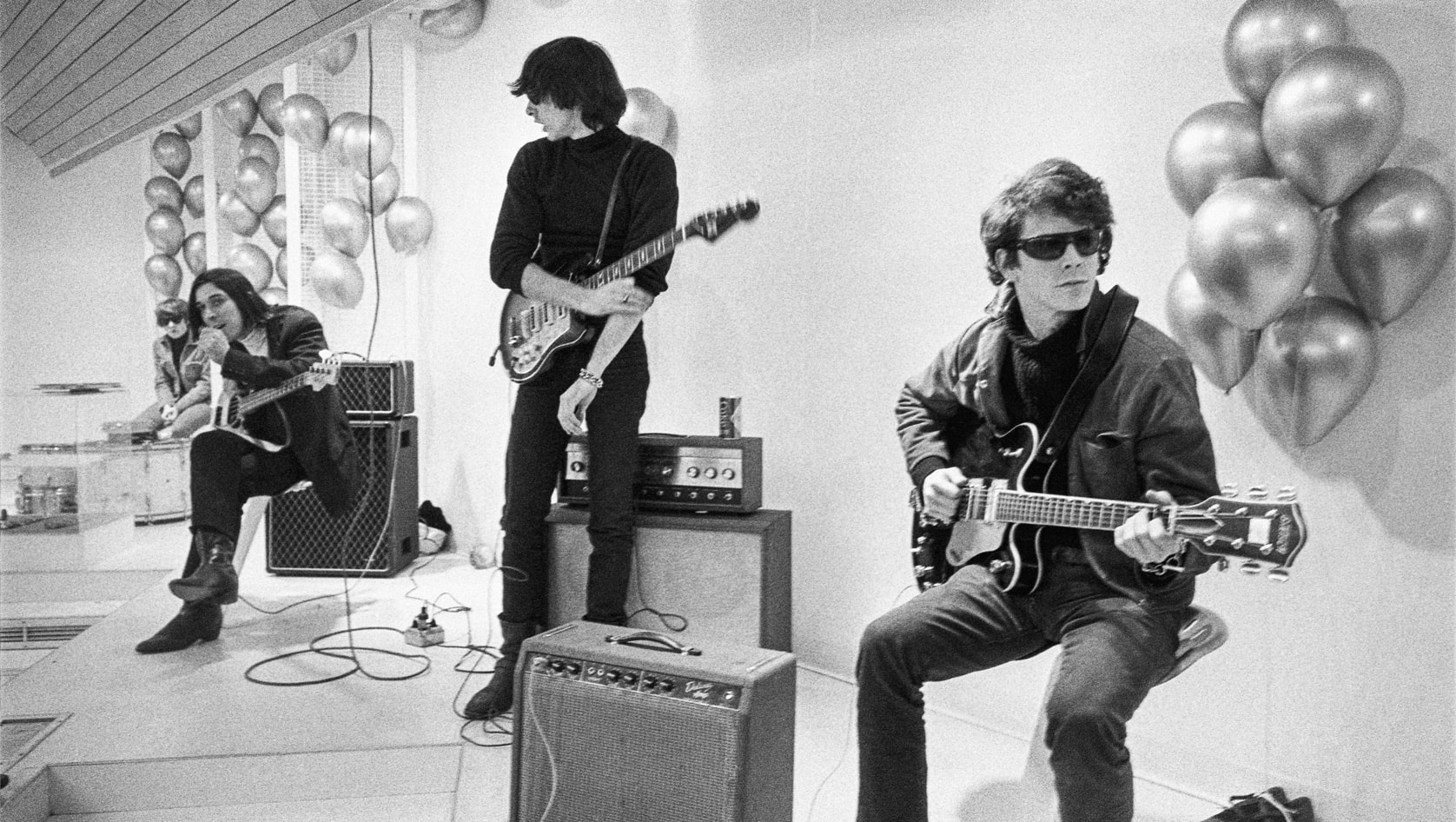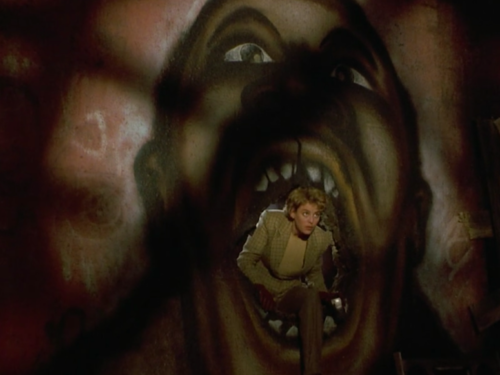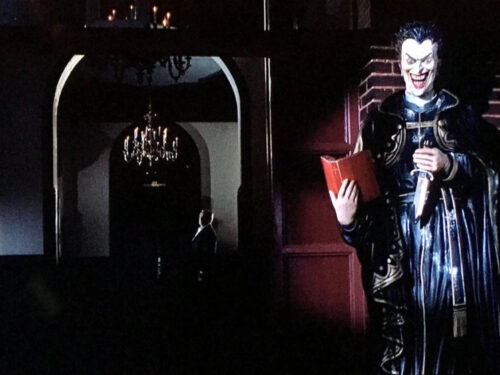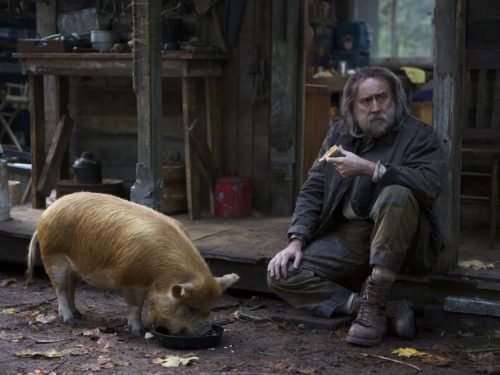Haynes’ first documentary creates a vivid and challenging portrait of a band that remains mysterious half a century after their breakup
Unlike most music documentaries and band-sanctioned biopics made these days, Todd Haynes’ brilliant exploration of the Velvet Underground is far more than a conventional biography. It is everything you could hope for in a film about a band that remains so mysterious half a century after their breakup. Looking at their career today, it is just as challenging to answer the question Lester Bangs posed in his review of the band’s 1969 self-titled album: “How do you define a group… who moved from ‘Heroin’ to ‘Jesus’ in two short-years?” The 1960s were certainly an era of quick changes in culture. (It only took The Beatles two years to go from performing “I Want to Hold Your Hand” on Ed Sullivan to dropping acid and chanting verses inspired by The Tibetan Book of the Dead in “Tomorrow Never Knows.”) But the Velvets were writing songs about hard drugs and sadomasochism right out of the gate around 1965 and performing them as extended, droning, feedback-heavy jams well before the release of their 1967 debut record. Then came the more gentle acoustic songs and the eventual turn to radio-friendly pop before chief songwriter Lou Reed called it quits in 1970. So when making a film about The Velvet Underground, a band that was so short lived and chameleon-like, the biggest challenge for a filmmaker is finding a way to tell the whole story without evaporating the mystery and the danger that lives on in the music.
A large part of The Velvet Underground’s success lies in what it leaves out. It avoids the boring habits of most rock docs. There are no contemporary music critics stating the obvious of the band’s continued relevance. There are no producers at mixing boards saying “and this is how we made the guitars go skroooonkkkk!” These omissions are unsurprising though, as Haynes has been poking fun at these types of tropes since his breakthrough film, Superstar: The Karen Carpenter Story (1988), in which he himself plays one of those fawning young critics. In Haynes’ two other narrative films about musicians — his David Bowie-inspired Velvet Goldmine (1998) and the kaleidoscopic Bob Dylan epic I’m Not There (2007) — he replicates retro media coverage of rock stars from the 1960s and ’70s and mimics the style of vérité documentaries like D.A. Pennebaker’s Dont Look Back (1967). The Velvet Underground, his first traditional documentary, is not operating in completely unfamiliar territory — it guides us through a thoroughly detailed telling of the life of the Velvets with the aid of interviews and a series of textual epilogue cards relating what happened after the band broke up. Anyone looking for an introduction to The Velvet Underground are certainly in the right place. You will hear all about Lou Reed’s turbulent adolescence, the band’s relationship with manager Andy Warhol and the Factory, and various road stories, notably from their trip to Los Angeles where they didn’t fit in with the peace and love crowd. But Haynes is most interested in how these particular minds came together at such a particular time and place to create music that would, without exaggeration, change the course of popular music. His means of exploring this is what makes the film so singular.
Put another way, The Velvet Underground charts the creation of a mystique — that most important and ineffable factor that is so central to the greatest rock ’n’ roll bands. A great deal of what made up The Velvet Underground’s particular mystique came from their association with Warhol. As mentioned, the film is primarily biographical, but the most important aspect of the experience is how Haynes arranges the information. Presented largely as an oral history told by those who were present during the band’s brief but explosive existence, most of the information comes to us through interviews with the still living members of the band, John Cale and Maureen Tucker, and various contemporaries and collaborators. Deceased members, including Reed, Sterling Morrison, and Nico, are conjured through archival recordings. (Doug Yule, who replaced Cale in the lineup and is still living today, is also present solely through audio recordings.) But Haynes — utilizing split screens and montage sequences composed of clips from avant-garde films and other archival materials produced contemporaneously to the Velvets — rarely shows us anything or lets a statement made by a subject stand to be taken as a straightforward fact. The speakers, as standard talking heads, are only sparingly shown as they appear now. The film relies a great deal on clips from Andy Warhol’s famous Screen Tests, the collection of single-take moving portraits he made of Factory members and other acquaintances between 1964 and 1966. (For an example, see the clip below.) So when the surviving members of the band or contemporaries such as Jonas Mekas (whom the film is dedicated to) or Mary Woronov are speaking of their experience in the 1960s, we are seeing them as they were then, their eyes staring directly at us while their future selves tell their story from a distance.
The Screen Tests act simultaneously as historical documents and as a means of complicating our understanding of the perspectives taken through the interviews, as if we are watching the subjects from behind a mirror. The mirror effect isn’t as if the subjects have been caught unguarded though. In typical Haynes fashion, it appears more like they are posing and developing personas before our eyes. For instance, we see two of Lou Reed’s Screen Tests from 1966. In the first, he is fresh faced and vulnerable as he poses for Warhol. In the second, taken only a few months later, he has hidden his stare behind sunglasses and ironically holds a Coke bottle, label out, next to his face like he is in an advert.
The simplicity and straightforwardness of the film’s title is also fascinating, as the band’s name comes to stand for far more than the group itself. The Velvet Underground is as interested in the greater confluence of minds that collected in the underground art scene around Warhol and the Factory as it is in the band. The clips of avant-garde and independent films — which include works by Warhol, Mekas, Stan Brakhage, Maya Deren, Kenneth Anger, and Jack Smith, among others — act as a mosaic of the cultural imagination that bore the Velvet Underground. Within brilliantly composed montages, these films clash against the banality of mainstream 1960s American culture found in television ads, newsreels, educational films, and game show clips. “We are not counterculture,” insists Mekas in reference to himself and his “underground” contemporaries. “We are the culture!”
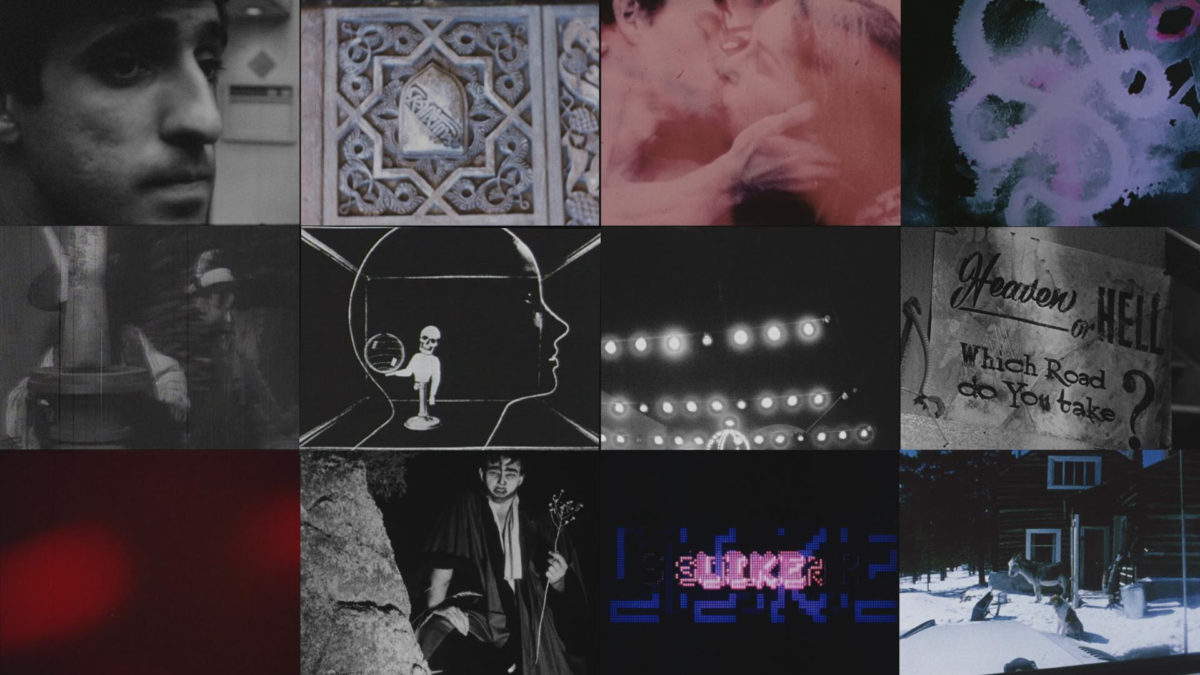
Through the use of split screens, Haynes often presents the avant-garde clips and other footage next to Warhol’s Screen Tests, as if the experimental films and other media were a projection of what’s running through the minds of his subjects. It does so not in the sense of what they are thinking or feeling, but what they would have been processing and experiencing at the time in question. This is particularly important in regard to how Haynes charts the development and synthesis of the band’s founding leaders, Reed and Cale. We see clips of experimental animation while hearing Cale’s recollections of his classical training and his transition into more outlandish musical forms and styles. He details a provocative early performance in which he smashed a piano with an axe and how he would tune his instruments to the electric hum of a refrigerator, which Cale believed to be “the hum of Western civilization.” Reed grew up obsessing over doo-wop and rock ’n’ roll in suburban Long Island. We see clips of early rock stars while Reed’s friends recall his predictions that he was going to be a rockstar while playing in high school and college garage bands. While Cale was tuning in to his refrigerator, the hum driving Reed was the zap of shock therapy, administered to quell his anxiety and anti-social behavior while in high school. The early, more vulnerable Reed Screen Test accompanies much of the narrative of his upbringing. As he starts to rebel and explore his sexuality and queerness, scenes from Kenneth Anger films such as Fireworks (1947) and Scorpio Rising (1963) mix in among footage of cruel, shaming television exposés of gay culture in the 1960s, conveying the conflicting extremes of rebelliousness and social ostracization that mark so much of Reed’s music and image.
Haynes creates a sense that Reed and Cale were nearly destined to meet through subtle echoing devices. The film draws parallels between Cale’s and Reed’s sensibilities, while recognizing the vastly different circumstances they were developed under. He includes newsreel footage of frat boys hammering a rival fraternity’s piano on a college campus during the film’s look at Reed’s college days, guiding us back to Cale’s own destructive piano recital. These choices create the effect of two minds coming from two different worlds, both needing the other in order to helm a new language in rock ’n’ roll. By the time we hear Jonathan Richman discuss his experience of being hypnotized by one of their epic “Sister Ray” performances, we know exactly where those droning, mesmeric powers came from without the mystery being stripped away by plainly told biography.
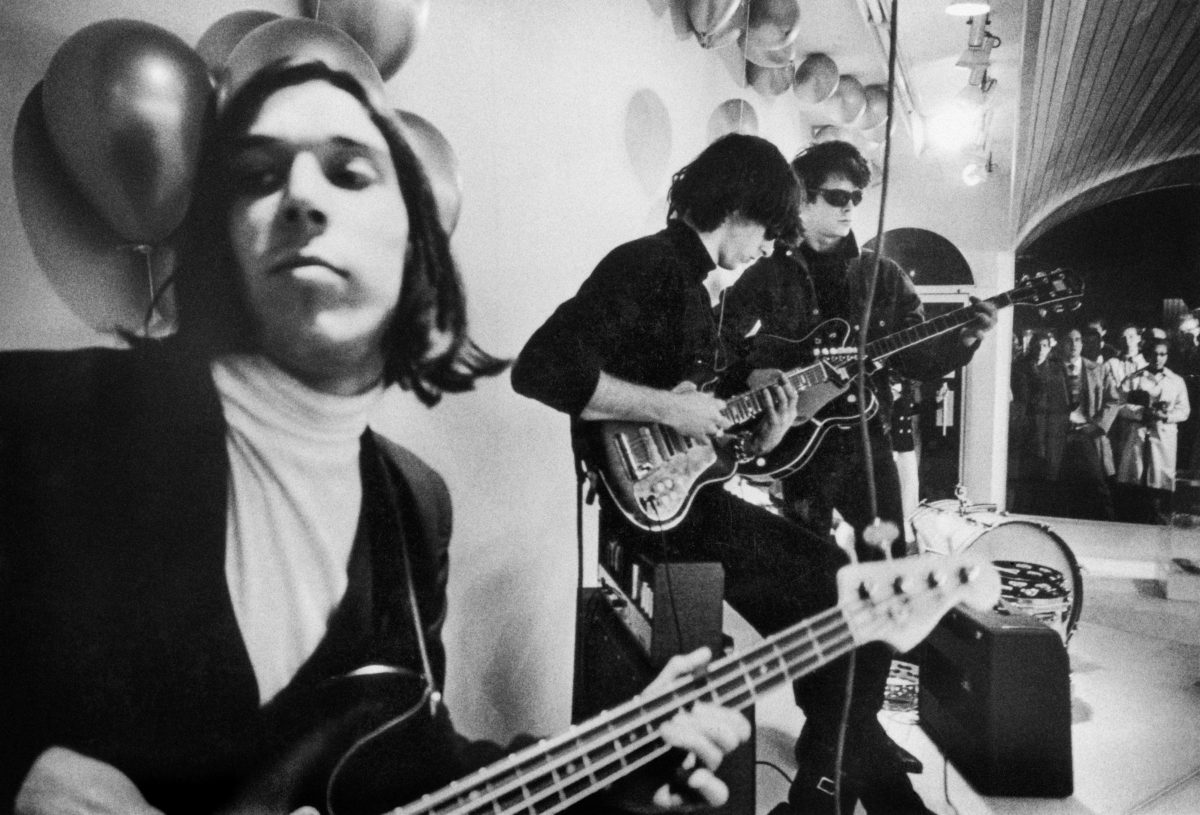
****
The Velvet Underground is an exceptional rock doc, but it is also very much a Todd Haynes film. This is largely due to the presence of Reed (who partially inspired Velvet Goldmine’s Curt Wild) and Andy Warhol. There is a common thread of character types running through Haynes’ best work, which includes Safe (1995) and his three films about musicians — Superstar, Velvet Goldmine, and I’m Not There. Haynes drives each of these films using characters who are, in a sense, empty vessels. They fall broadly into two types: The first being more aggressive figures, the second more passive.
The first character type has more to do with the rock stars of his music films. These characters, his Bowie-inspired Brian Slade and the various Dylans of I’m Not There, are more along the lines of mimics or chameleons who change in and out of personas like clothing. They borrow and steal people’s characteristics and personality traits, caring little for the harm and the consequences when they move on to the next stage of their identity. A figure like Brian Slade, for instance, is capable of being charismatic and alluring, but also brutally detached, manipulative, and cold when not “in character.”
Those that fall into the second category function within their narratives more like blank slates. Projections are cast upon them by their social environments and their surroundings. Acted with a member of Haynes’ Barbie doll theater troupe, Superstar’s Karen Carpenter is a character whose body withers away by trying to conform under a cruel fame system that promotes perfect appearances above all. We see how Karen hides her inner turmoil of trying to fit some sort of ideal surface image while, as one of the critics in the film says, crying out for help through syrupy pop songs. In Safe — Haynes’ best film — Julianne Moore plays Carol White, a wispy-voiced, wealthy Los Angeles housewife suffering from environmental illness in the late 1980s. Haynes explores a world of incredibly elaborate surfaces — of fancy dresses, dolled-up hairstyles, and shots that accentuate the perfectly symmetrical decoration of its affluent characters’ homes. But when Haynes pulls in for close-ups on Carol, you could get lost searching for who she actually is or by trying to interpret what she is thinking or feeling. Her identity appears more invested in her furniture than her spirit; She moves through the film like a chameleon, blending into each new surrounding she inhabits.
In a sense, The Velvet Underground bridges these two character types within the same film through the aggressive and ambitious Reed and the deceptively passive Warhol. Cale has described Reed’s songwriting style as “method acting in song,” but Reed’s understanding of himself is more extreme. He has defined himself as something of an identity thief who steals traits and mannerisms from those around him. “I write through the eyes of somebody else,” Reed once said. “I’m always checking out people I know I’m going to write songs about. Then I become them. That’s why when I’m not doing that, I’m kind of empty. I don’t have a personality of my own. I just pick up other people’s personalities… If I’m around someone who has a gesture that’s typical of them, if I’m around them for more than an hour, I’ll start doing it. And if I really like it, I’ll keep it until I meet someone else who has something else. But I don’t have anything myself.”
In The Velvet Underground, we can see how Reed took on aspects of both Cale and Warhol. It is fascinating how once Reed ousts Warhol and Cale following the release of White Light/White Heat (1968), the film’s pace picks up. This was the period in which the band’s style ranged most extremely. They released their most somber and dressed-down album, 1969’s The Velvet Underground, and followed it with Loaded (1970), their straight-up pop record. A number of reviewers have complained about how Haynes speeds through these final years after spending such an extensive amount of time detailing the development and formation of the band. But the swift pace conveys rather effectively the new dynamic within the group. At this point, they had gained a recognizable frontman in Reed, but lost the tension that defined and inspired their best work. While the music made during this period remained vital and challenging, there is a sense that the group, mostly because of Reed, lost sight of their identity without the presence of Cale and Warhol to work off of. Upon the group’s breakup, Reed then blended back into his previous life as a Long Island suburbanite. It would take another reflective force in David Bowie to bring him back a few years later.
Warhol had a similar “emptiness” to him, albeit less oriented in mimicry than Reed. Speaking of Warhol and his role within the Factory in Please Kill Me: The Uncensored Oral History of Punk, Jonas Mekas says, “You could project anything on him, put anything in, unload yourself, give him this, and he wouldn’t put you down. Andy was your father and mother and brother, all of them. So that’s why people felt so good around him — they could be in those films, they could just say and do whatever they wanted because they wouldn’t be disapproved, that was his genius.” Similarly, Mary Woronov, who took part in various films and performances for Warhol, says in The Velvet Underground that the blankness of Warhol’s personality forced you to do something and act out in order to fill a sort of void. (It has been said that Warhol’s style of directing films involved turning on the camera and letting his actors make up a scene while he sat back and read the paper until the film ran out.) Filmmaker Paul Morrissey, on the other hand, has been less kind in remembrances of his old collaborator: “As a presence or some kind of figure in my consciousness, [Warhol] never really, I think, existed. Andy was a very timid, flimsy character.”
The truth of Warhol’s personality is presumably, of course, somewhere in the middle, but these quotations, as well as Reed’s self-examination, could have been applied to any number of Haynes’ characters. The remarks about Warhol, particularly Morrissey’s, are highly relevant in relation to Safe’s Carol White, who Haynes describes in his screenplay as being “most comfortable when the world goes about its business, accepting (by ignoring) her as one of its own.”
In a sense, Warhol is the mirror at the center of The Velvet Underground, most literally through the extensive use of his Screen Tests. Like Warhol, Haynes is interested in face values. While watching the various members of the band and their contemporaries staring into Warhol’s camera, one can’t help but be reminded of the final shot in Safe, as Haynes takes a mirror’s perspective on Carol White. He shows her gazing at her image, repeating “I love you” to her reflection, and leaving us with a startlingly inaccessible surface. His best films make us question what we are looking for in his images and in his characters, as if the proposed depths behind them are not only opaque and inaccessible to us, but also ever-evolving mysteries to the characters themselves. The Velvet Underground may not stand among Haynes’ best work, but, like his greatest films, it challenges us to stay on the surface while disrupting our ease of access. In the words of Oscar Wilde, another prominent figure in the worldview within Haynes’ films, “It is only shallow people who do not judge by appearances. The true mystery of the world is in the visible, not the invisible.” The Velvet Underground shows that the legend of the band is still being written and performed to this day.
Purchase The Velvet Underground on Blu-ray
Stream The Velvet Underground on Apple TV+
Stay up to date with all things Split Tooth Media and follow Brett on Twitter and Letterboxd
(Split Tooth may earn a commission from purchases made through affiliate links on our site.)

